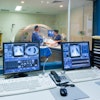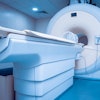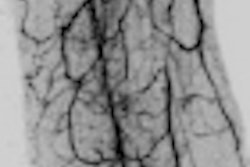Tuesday, December 1 | 10:30 a.m.-10:40 a.m. | SSG21-01 | Room E353B
In this scientific session presentation, Italian researchers will discuss a paper on how steady-state (SS) contrast-enhanced MR angiography (CE-MRA) with gadobenate dimeglumine of peripheral arteries below the knee could advance the treatment of patients.The study compared contrast-enhanced MRA with a gadobenate dimeglumine contrast agent (MultiHance, Bracco Imaging, Milan, Italy) to the diagnostic accuracy of first-pass steady-state imaging using digital subtraction angiography (DSA).
The study enrolled 35 patients with symptoms of peripheral arterial disease. The patients received CE-MRA of the peripheral arteries at 1.5-tesla MRI using standard 3D imaging as well as DSA. Three readers then reviewed separate first-pass and steady-state contrast-enhanced MRA datasets for quality of vessel visualization and for the presence or absence of steno-occlusive disease, defined as narrowing of greater than 50%.
In the grading of stenoses, first-pass imaging results achieved sensitivity of 90%, specificity of 92%, positive predictive value of 91%, and negative predictive value of 91%. The steady-state technique registered 95% across the board for sensitivity, specificity, positive predictive value, and negative predictive value.
Differences in the performance of first-pass and steady-state imaging were statistically significant (p < 0.001), while the agreement between DSA and SS images was substantial (kappa = 0.93).
Based on those results, researchers concluded that steady-state MRA of peripheral arteries with gadobenate dimeglumine is "superior to conventional FP imaging for the evaluation of stenosis as compared to DSA."
As for the advantage of contrast-enhanced MRA over DSA, lead author Dr. Michele Anzidei from the department of radiological sciences at the University of Rome "La Sapienza" said that MRA is "a noninvasive procedure that doesn't require hospitalization, while subjects undergoing DSA should be referred to an in-patient routine. Second, the costs of MRA are limited to the use of contrast agent and to the scanner workload, while DSA requires not only the angiographic suite and much more contrast agent, but even a whole angiographic equipment suite, including an anesthetist."
Regarding DSA, she added that a second-level examination -- MRA or CT angiography -- before DSA should be ordered for all patients with iodine intolerance, younger subjects in whom radiation should be avoided, and patients in whom the diagnosis of peripheral arterial disease has to be confirmed before treatment.


.fFmgij6Hin.png?auto=compress%2Cformat&fit=crop&h=100&q=70&w=100)





.fFmgij6Hin.png?auto=compress%2Cformat&fit=crop&h=167&q=70&w=250)











